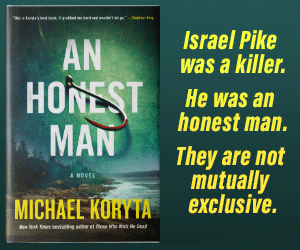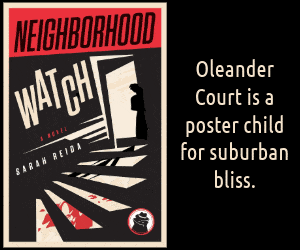
Death on a Winter’s Day is a historical murder mystery set in Scotland in the 1920s. And, no surprise, its main influences are all things Scottish. After all, there’s little point in setting a murder mystery in such an atmospheric and surprising country without making the most of it. So here are the top 5 Scottish influences that made Death on a Winter’s Day the book it is.
1. The Monsters
In Death on a Winter’s day, the only way to reach the castle where the main action takes place is via a loch. And not just any loch. This one is inhabited by a monster. Most people assume that Loch Ness is the only loch with its own monster (The Loch Ness Monster of course – or ‘Nessie’ as she’s fondly known by the locals). However several lochs have their own mythical critters, including Loch Morar, around 70 miles from its more famous cousin. Loch Morar is home to Morag, thought to be Nessie’s sister. In 1968, the barman of the local hotel reported: “I saw… something coming out of the water… The neck was about one and a half feet in diameter and tapered up to between ten inches and a foot.” It’s not recorded if Nessie and Morag ever get together, but if they did, it would be a hell of a brother/sister reunion.
2. The Selkies
The main character in Death on a Winter’s Day, Lady Eleanor Swift, encounters a half woman/half seal creature on the shores of the loch. Or is she hallucinating? ‘Selkies’ are animals from folklore that take the form of seals but who can also shed their pelts and appear as human. But only for a certain time. In the end, they have to return to the water. Tales abound of selkies either, it seems, saving local fishermen’s lives, or leading them to their death. Opinion seems divided.
3. The Grinches
In case you don’t know, the original Grinch was from a Dr Seuss book called ‘The Grinch who stole Christmas.’ (okay, ignoring Rudyard Kipling and a few others who used the term ‘grinching’). Death on a Winter’s Day is set around the festive season in 1923 and the ‘Grinches’ who stole Christmas were the Presbyterian Church. In 1580 they actually banned Christmas, even persuading the Scottish parliament to pass an act in 1604 making it illegal! So in Death on a Winter’s Day the mainly English guests have to celebrate Christmas in secret. (Christmas remained banned in Scotland in effect until 1958 when Christmas Day finally became a national holiday. Boxing Day had to wait until 1974).
4. The Munros
It would be a crime to write a novel (especially a crime novel!) set in the Highlands of Scotland and not make use of the spectacular, brooding hills. Especially those over 3,000 feet which are known as ‘Munros’. In Death on a Winter’s Day, Lady Swift’s beau, Detective Chief Inspector Seldon, is warned off attempting to climb any munros given his state of health. Especially as it’s winter, with thick snow on the ground. It’s good advice. In one year alone, a chilling 54 people died climbing Scotland’s deadly munros.
5. The Mists
The Scottish Highlands are the perfect setting for a murder. And there’s no better weather for a mystery than mist. And the Scots have mist down to a fine art. In fact, they even have their own mist – Scotch mist, a variety common in the Highlands. It’s thick and often accompanied by drizzly rain. Lovely! In fact, the most popular word in the Scot’s language was recently voted to be ‘dreich’. In terms of weather, roughly translated it means dull, grey, miserable, gloomy, depressing…. you get the picture. Oh, and they have several hundred words for snow.
This is only some of the influences in Death on a Winter’s Day. Hopefully, you can see now why the Scottish Highlands are the perfect place for a murder mystery. Especially one set in the Golden Age of crime. Just make sure you wrap up warm and bring your own Christmas cake or mince pies.
Apparently, Morag is partial to them.

Verity Bright is the pseudonym for a husband-and-wife writing partnership that has spanned a quarter of a century. Starting out writing high-end travel articles and books, they published everything from self-improvement to humour, before embarking on their first historical mystery. They are the authors of the fabulous Lady Eleanor Swift Mystery series, set in the 1920s.






